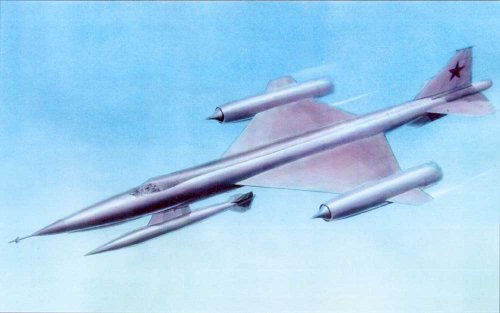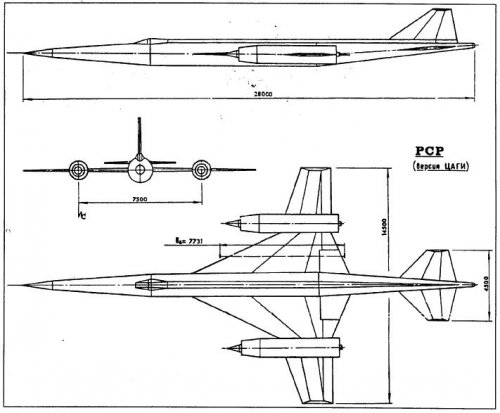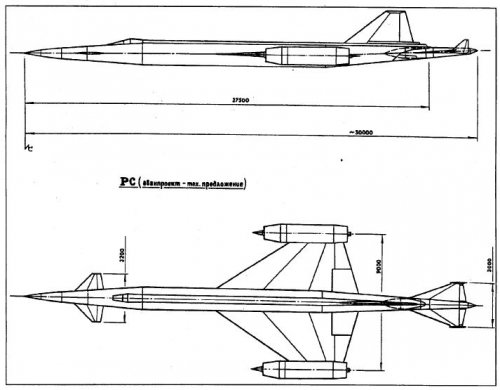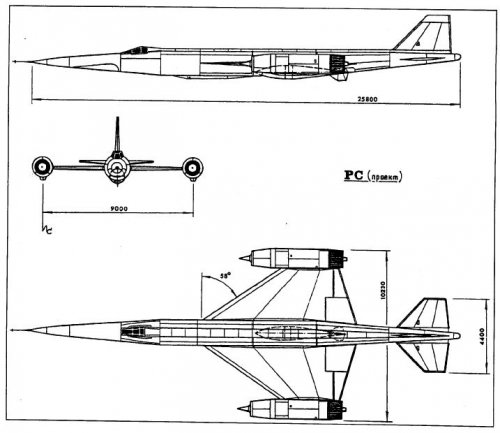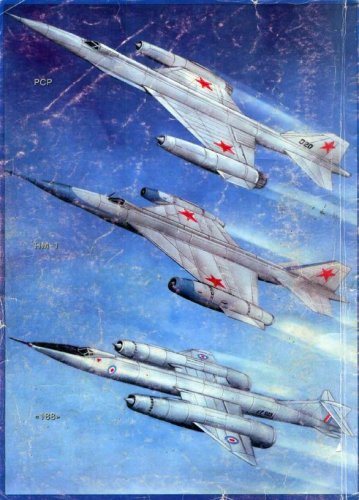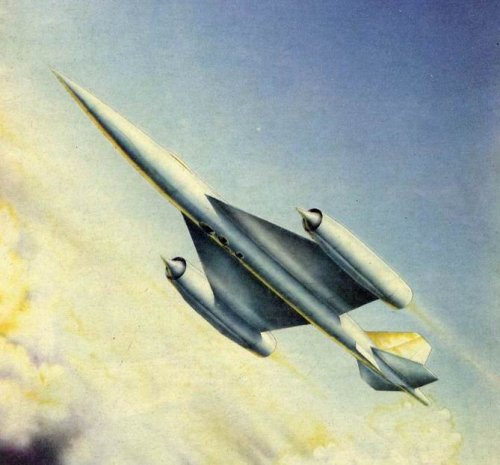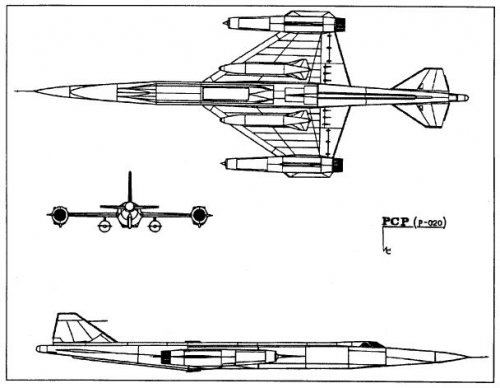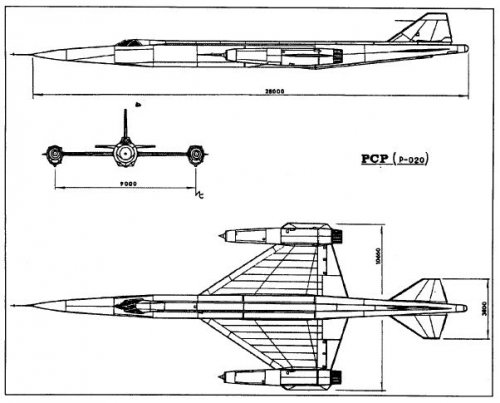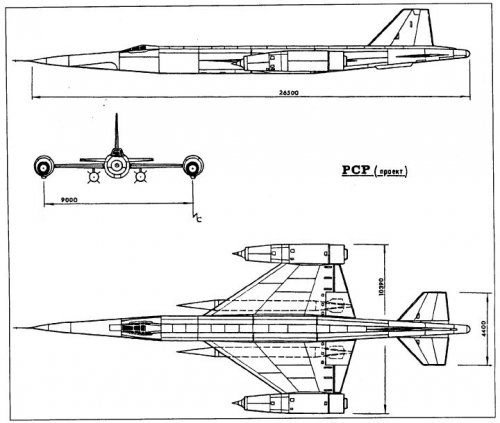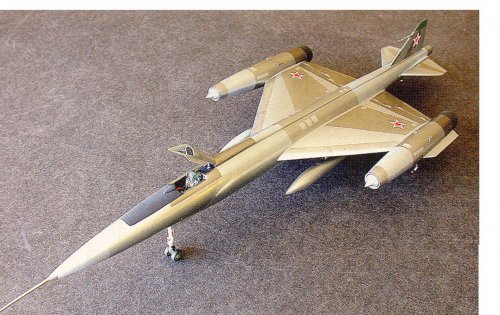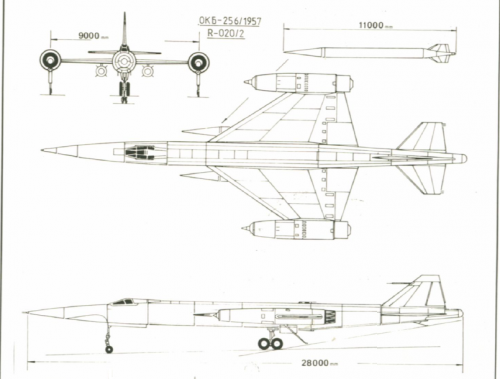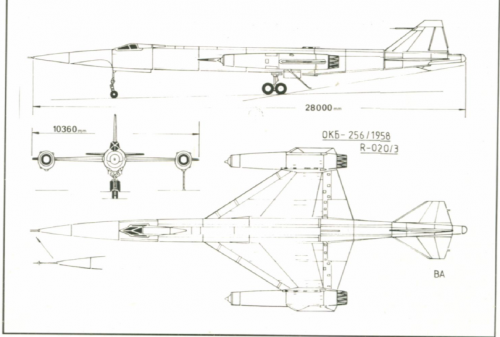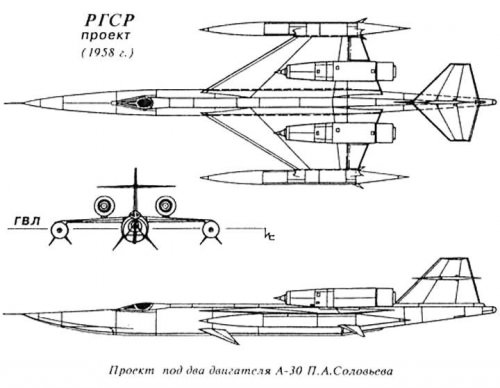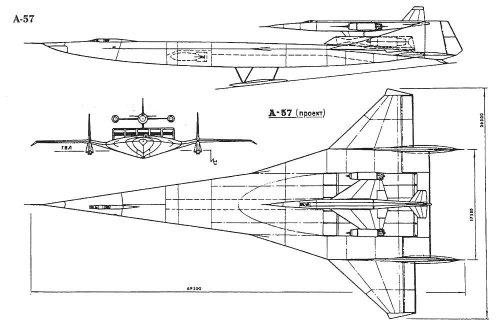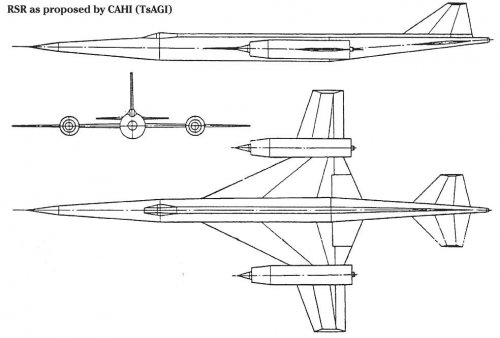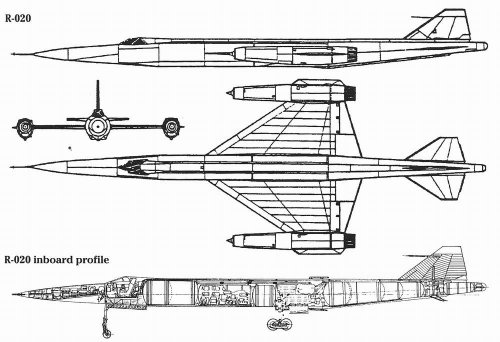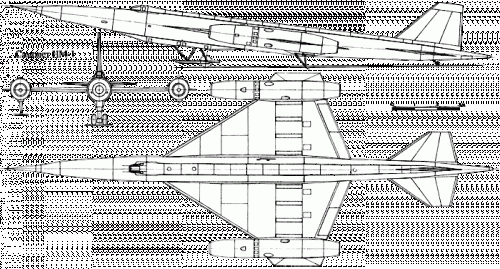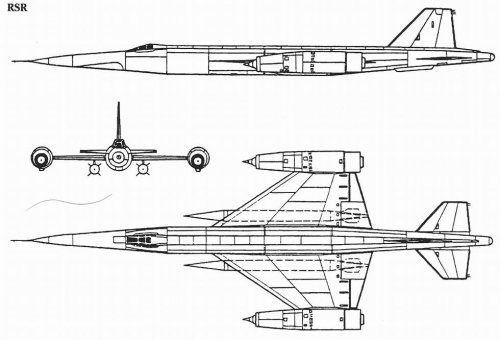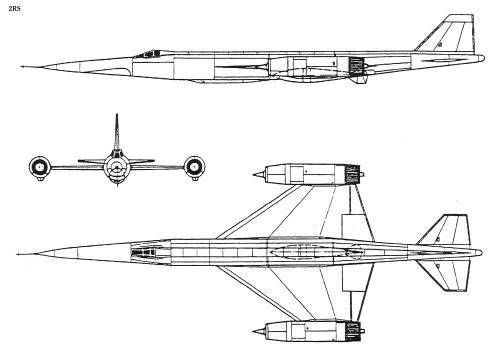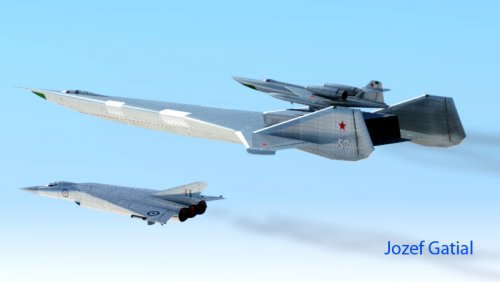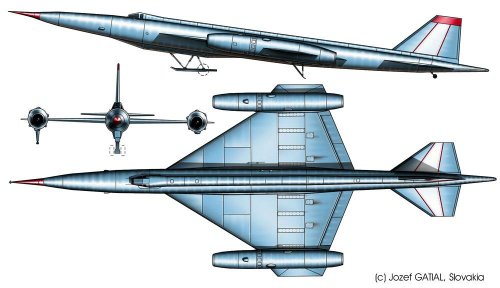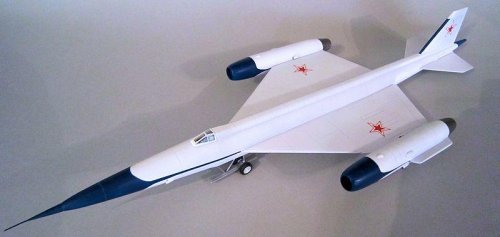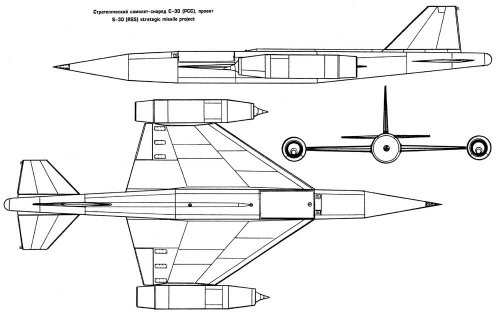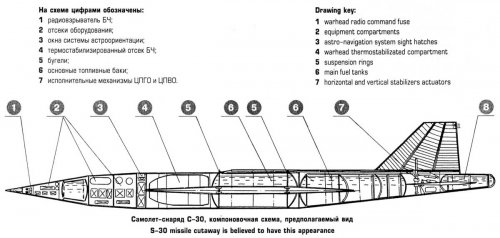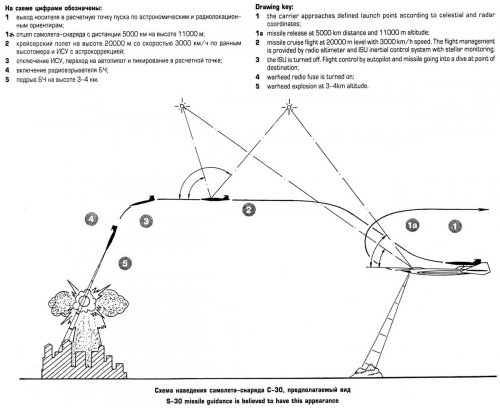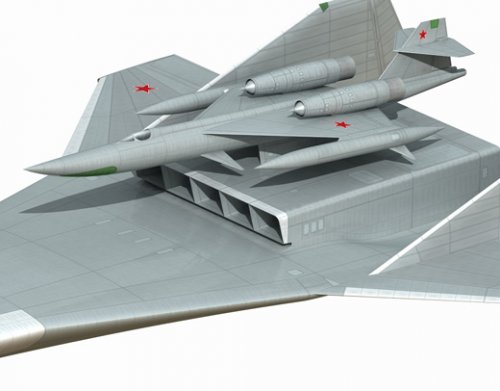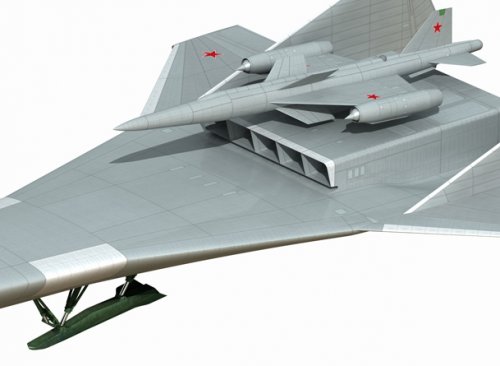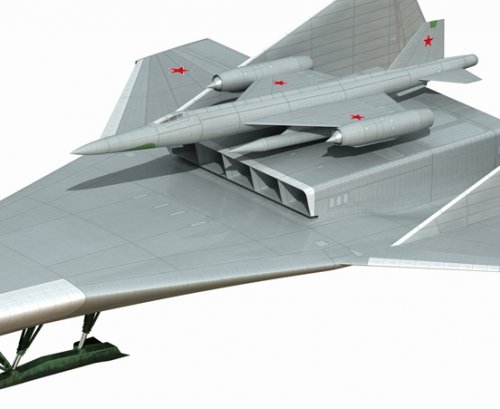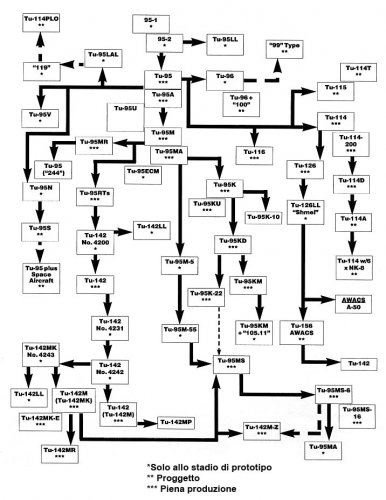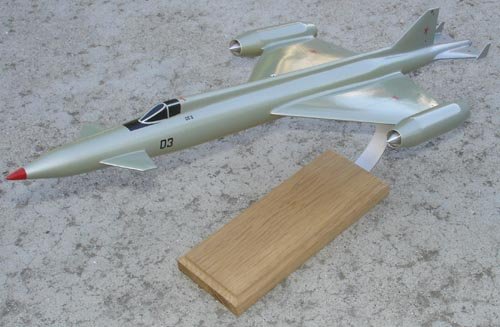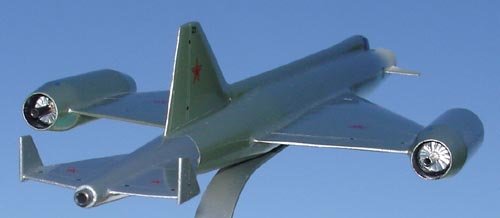A
You are using an out of date browser. It may not display this or other websites correctly.
You should upgrade or use an alternative browser.
You should upgrade or use an alternative browser.
ucon
ACCESS: Top Secret
Re: Tsybin RSR
Hi all
Small remark. This is R-020, design by Zybin while he was woking in Myasishchev DB. This pic from "Illustrated Encyclopedia of Myasishchev aircraft." Vol.6.
Unfortunatelly testpilot site usualy use materials without permition and even without mention the source.
Regards
Hi all
Small remark. This is R-020, design by Zybin while he was woking in Myasishchev DB. This pic from "Illustrated Encyclopedia of Myasishchev aircraft." Vol.6.
Unfortunatelly testpilot site usualy use materials without permition and even without mention the source.
Regards
A
avatar
Guest
yes this is indeed the R020 and i have fixed the topic headline to reflect the same.
Reverie Planetarian
42 Megabytings of Pure Adrenaline
- Joined
- 4 November 2008
- Messages
- 6
- Reaction score
- 0
It does resemble the concept behind an SR-71, but to me it looks more like a Bristol 188. You know, the Flaming Pencil. Different plane, same job.
Just call me Ray
ACCESS: Top Secret
- Joined
- 26 August 2007
- Messages
- 672
- Reaction score
- 44
Re: Tsybin RSR
Was he also responsible for the Bounder? I just realized, there is a resemblance.
ucon said:Hi all
Small remark. This is R-020, design by Zybin while he was woking in Myasishchev DB.
Was he also responsible for the Bounder? I just realized, there is a resemblance.
OM
ACCESS: Top Secret
...Looks more like a Soviet attempt to knockoff the CL-400 "Suntan" much in the same way Buran was a knockoff of the Space Shuttle.
Design byuro/OKB-256 by P.Tsybin "RS - RSR - NM-1 - R-020 - RSS (S-30) -1955
1) RS-preliminary draft composite strike complex. Tail plane was a cruise bomb "Tatiana"
(based on the product "244N" - nuclear bomb, the length of 5.5 meters, diameter of 0.85 m), which was
planned for the purpose of being dropped to 50 km away.
2) RS-version of the plane striking the "traditional" placement of bombs.
3) TsAGI proposal to increase the aerodynamic qualities of aircraft. (A similar proposal was also addressed to -
M-52K by Myasischev)
4) RSR reco. Cutaway draw.
5) A comparative impression artist
Structurally similar RSS were working in the OKB-156 A.Tupolev's aircraft the "113" and the OKB-23 V.Myasischev's "M-44" - "M-61"
http://www.secretprojects.co.uk/forum/index.php/topic,2176.0/
1) RS-preliminary draft composite strike complex. Tail plane was a cruise bomb "Tatiana"
(based on the product "244N" - nuclear bomb, the length of 5.5 meters, diameter of 0.85 m), which was
planned for the purpose of being dropped to 50 km away.
2) RS-version of the plane striking the "traditional" placement of bombs.
3) TsAGI proposal to increase the aerodynamic qualities of aircraft. (A similar proposal was also addressed to -
M-52K by Myasischev)
4) RSR reco. Cutaway draw.
5) A comparative impression artist
A potential carrier for the high-altitude launch - RS, RSR, and it is not manned, the automatic version of the RSS (S-30), was to be a bomber's Tu-95N - OKB-156 by A.Tupolev and A-57, A-58 - OKB-938(SiBNIA) R. Bartiny.Reverie Planetarian said:It does resemble the concept behind an SR-71, but to me it looks more like a Bristol 188. You know, the Flaming Pencil. Different plane, same job.
Structurally similar RSS were working in the OKB-156 A.Tupolev's aircraft the "113" and the OKB-23 V.Myasischev's "M-44" - "M-61"
http://www.secretprojects.co.uk/forum/index.php/topic,2176.0/
Attachments
shockonlip
ACCESS: Top Secret
- Joined
- 29 January 2008
- Messages
- 605
- Reaction score
- 46
Wow, Neat thread and great video Flateric!
Beautiful airplane!
Beautiful airplane!
- Joined
- 27 May 2008
- Messages
- 1,071
- Reaction score
- 2,093
Tsybin RSR - Did this A/C have an airframe with a significant Beryllium alloy content?
Be alloys - Is fatigue is a significant issue with these alloys, was the RSR original design service goal just 200Hr, and when the fatigue airframe was ground testing it showed it was worse!....... much worse? Did the production Space Shuttles use Be Alloys or was this just an early prototype proposal?
Be alloys - Is fatigue is a significant issue with these alloys, was the RSR original design service goal just 200Hr, and when the fatigue airframe was ground testing it showed it was worse!....... much worse? Did the production Space Shuttles use Be Alloys or was this just an early prototype proposal?
- Joined
- 27 May 2008
- Messages
- 1,071
- Reaction score
- 2,093
Some what surprisingly in these PC days, Be alloys (90%+ Be) were quite extensively used as a braking heat/friction pack on some A/C in the late 60 early 70's e.g C5 and F14, until Carbon-Carbon came along as a lightwieght replacement. However I understand the Be brakes suffered badly from disk cracking. I think the F14 was only cleared for Be brakes whilst carrier deployed.
- Joined
- 25 June 2009
- Messages
- 13,941
- Reaction score
- 3,574
Well, it's only too bad for the Bristol 188 that it merely "looked like" the Tsybin R-020, because the R-020 was a design for an operational (reconnaissance) aircraft with a cruise speed of 2,44Mach and a range of 4000km when all the Bristol 188 (strictly an experimental aircraft for supersonic research and stainless-steel fabrication technique) could ever achieve was 1,88Mach (in 1962, when operational aircraft already flew at higher speeds for at least 4 years), a speed it could maintain for a pathetic 2 minutes... In other words a complete and costly failure, as forecasted by MDWP which had refused to finance it.
That being said, there are tens of aircraft designs of the 1950s that "look like" the Bristol 188, from Lockheed, SNCAN, Convair, SNCASO, Vought, Douglas, SAAB, OKB-115 (Yakovlev), Northrop, etc.
That being said, there are tens of aircraft designs of the 1950s that "look like" the Bristol 188, from Lockheed, SNCAN, Convair, SNCASO, Vought, Douglas, SAAB, OKB-115 (Yakovlev), Northrop, etc.
blackkite
Don't laugh, don't cry, don't even curse, but.....
- Joined
- 31 May 2007
- Messages
- 8,390
- Reaction score
- 6,310
Hi!
French site.
http://translate.google.fr/translate?hl=fr&sl=fr&tl=en&u=http%3A%2F%2Fprototypes.free.fr%2Fnm1%2Fnm1-6.htm
"In the early 1950s, it was evident in the USSR and in the West that the next thermonuclear weapons would need a new type of strategic outlined his project for the RS supersonic bomber.
The preliminary draft is submitted on January 31, 1956, with an additional proposal for a recognition version of the apparatus called 2RS. However, Koroliev is making so rapid progress with the ICBM R-7 (launched on May 15, 1957 and with complete success on August 21, 1957) that the RS is quickly abandoned. vector. Pending the development of the ICBM (intercontinental ballistic missile, see the history of the Convair X-11 / X-12 ) the only possible response was the supersonic bomber. After a thorough study of the subject, Tsybin visited the Kremlin on 4 March 1954 and
The resources are then transferred to the 2RS reconnaissance aircraft studies. The RS had an aerodynamically advanced configuration and somewhat resembled the Lockheed CL-400 Suntan of the same era. The wing was placed very far back on a fuselage of circular cross-section and had a very low thickness / chord ratio of 2.5 to 3.5%. Wings with a large string complemented conventional fins, the other surfaces were duck planes and a conventional steering rudder, all surfaces being operated hydraulically."
RS three side view.
http://www.secretprojects.co.uk/forum/index.php?action=dlattach;topic=6063.0;attach=65700;image
”Although the RSR derives directly from the 2RS , it differs in the adoption of turbojets with a high by-pass ratio (similar to the J-58 of A-12 / YF-12 / SR-71 ) Reinforced landing gear to allow conventional take-offs at full load. One of the design choices was to use a structure as light as possible with a load factor of only 2.5 and avoiding thermal deformation despite coating temperatures of nearly 250 ° C at full speed. As a result, the use of aluminum was proscribed, although some elements (inner wing and tail frames) were made of aluminum alloy / beryllium."
"In the autumn of 1956, a budget was released for a research aircraft designated NM-1 in support of the development of the RSR . This aircraft was a flying demonstrator based on the RSR but simplified, with proven turbojets. The five-spar wing had constant rope wings, unlike those of the RSR. Two Mikulin AM-5 turbojets rated at 2,000 kg of thrust were installed in nacelles attached to the wing salmon. The air intakes of these engines did not have a central cone.
The pilot sat in an ejectable seat under a very small canopy. The landing gear consisted of a long hydraulically retractable ski in a housing fitted under the fuselage, a small tail wheel, and retractable balancines under the nacelles. For take-offs, a detachable two-wheeled trolley was fastened under the main ski.
After the rolling tests, small additional wing surfaces were added to the outside of the engines. The fuselage contained two kerosene tanks and a water tank in the nose to balance the center of gravity to 25.5% of the length. "
"On receipt of the NM-1 data , the RSR had to be largely remodeled. However, construction was only slightly delayed, and in early 1959 plans for the first five R-020 pre-series aircraft were delivered to Factory No. 99 at Ulan-Ude. However, Tsybin's impressive plane had rivals and political enemies. Many strategists thought, as in the West, that strategic aircraft were obsolete and that budgets had to be transferred to missiles and space. "
"After the abandonment of the RSR (and its successor R-020 ), Tsybin and TSAGI proposed various projects derived from the RSR . The aerodynamicists at this facility were convinced that this supersonic aircraft had wings with a trapezoidal profile instead of a traditional swept profile.
As this type of wing required a very long take-off distance, they proposed to add wing extensions beyond the engine nacelles, carrying the wingspan to 14.5 meters, but requiring a complete redefinition of the wings, Which was soon abandoned. "
"Another concept is the impressive A-57, proposed in 1957 by RL Bartini. The A-57 was to be propelled by five Kuznetsov NK-10 turbojets, each with 25,000 kgp of thrust. This 320-tonne aircraft, with a length of 69.5 meters and a wing area of 755 m2, had to be able to take off and land on the water for operational flexibility and to avoid the use of airfields (Although he also had skis to land conventionally as needed).
In this version, the A-57 would have been used as a carrier aircraft for a reconnaissance derivative of the RSR. Together they would have had a range of 5,000 kilometers, the reconnaissance vehicle using its fuel only on the return flight. "
"The Tsybin RGSP, also dating back to 1957, was a proposal for a seaplane with engines moved over the wings to avoid water ingestion and with external tanks attached to the wing buoyancy. This version was not equipped for landings on airfields. "
Terribly sorry for image duplication as usual. But these images have aircraft identification which I need.
French site.
http://translate.google.fr/translate?hl=fr&sl=fr&tl=en&u=http%3A%2F%2Fprototypes.free.fr%2Fnm1%2Fnm1-6.htm
"In the early 1950s, it was evident in the USSR and in the West that the next thermonuclear weapons would need a new type of strategic outlined his project for the RS supersonic bomber.
The preliminary draft is submitted on January 31, 1956, with an additional proposal for a recognition version of the apparatus called 2RS. However, Koroliev is making so rapid progress with the ICBM R-7 (launched on May 15, 1957 and with complete success on August 21, 1957) that the RS is quickly abandoned. vector. Pending the development of the ICBM (intercontinental ballistic missile, see the history of the Convair X-11 / X-12 ) the only possible response was the supersonic bomber. After a thorough study of the subject, Tsybin visited the Kremlin on 4 March 1954 and
The resources are then transferred to the 2RS reconnaissance aircraft studies. The RS had an aerodynamically advanced configuration and somewhat resembled the Lockheed CL-400 Suntan of the same era. The wing was placed very far back on a fuselage of circular cross-section and had a very low thickness / chord ratio of 2.5 to 3.5%. Wings with a large string complemented conventional fins, the other surfaces were duck planes and a conventional steering rudder, all surfaces being operated hydraulically."
RS three side view.
http://www.secretprojects.co.uk/forum/index.php?action=dlattach;topic=6063.0;attach=65700;image
”Although the RSR derives directly from the 2RS , it differs in the adoption of turbojets with a high by-pass ratio (similar to the J-58 of A-12 / YF-12 / SR-71 ) Reinforced landing gear to allow conventional take-offs at full load. One of the design choices was to use a structure as light as possible with a load factor of only 2.5 and avoiding thermal deformation despite coating temperatures of nearly 250 ° C at full speed. As a result, the use of aluminum was proscribed, although some elements (inner wing and tail frames) were made of aluminum alloy / beryllium."
"In the autumn of 1956, a budget was released for a research aircraft designated NM-1 in support of the development of the RSR . This aircraft was a flying demonstrator based on the RSR but simplified, with proven turbojets. The five-spar wing had constant rope wings, unlike those of the RSR. Two Mikulin AM-5 turbojets rated at 2,000 kg of thrust were installed in nacelles attached to the wing salmon. The air intakes of these engines did not have a central cone.
The pilot sat in an ejectable seat under a very small canopy. The landing gear consisted of a long hydraulically retractable ski in a housing fitted under the fuselage, a small tail wheel, and retractable balancines under the nacelles. For take-offs, a detachable two-wheeled trolley was fastened under the main ski.
After the rolling tests, small additional wing surfaces were added to the outside of the engines. The fuselage contained two kerosene tanks and a water tank in the nose to balance the center of gravity to 25.5% of the length. "
"On receipt of the NM-1 data , the RSR had to be largely remodeled. However, construction was only slightly delayed, and in early 1959 plans for the first five R-020 pre-series aircraft were delivered to Factory No. 99 at Ulan-Ude. However, Tsybin's impressive plane had rivals and political enemies. Many strategists thought, as in the West, that strategic aircraft were obsolete and that budgets had to be transferred to missiles and space. "
"After the abandonment of the RSR (and its successor R-020 ), Tsybin and TSAGI proposed various projects derived from the RSR . The aerodynamicists at this facility were convinced that this supersonic aircraft had wings with a trapezoidal profile instead of a traditional swept profile.
As this type of wing required a very long take-off distance, they proposed to add wing extensions beyond the engine nacelles, carrying the wingspan to 14.5 meters, but requiring a complete redefinition of the wings, Which was soon abandoned. "
"Another concept is the impressive A-57, proposed in 1957 by RL Bartini. The A-57 was to be propelled by five Kuznetsov NK-10 turbojets, each with 25,000 kgp of thrust. This 320-tonne aircraft, with a length of 69.5 meters and a wing area of 755 m2, had to be able to take off and land on the water for operational flexibility and to avoid the use of airfields (Although he also had skis to land conventionally as needed).
In this version, the A-57 would have been used as a carrier aircraft for a reconnaissance derivative of the RSR. Together they would have had a range of 5,000 kilometers, the reconnaissance vehicle using its fuel only on the return flight. "
"The Tsybin RGSP, also dating back to 1957, was a proposal for a seaplane with engines moved over the wings to avoid water ingestion and with external tanks attached to the wing buoyancy. This version was not equipped for landings on airfields. "
Terribly sorry for image duplication as usual. But these images have aircraft identification which I need.
Attachments
- Joined
- 13 May 2006
- Messages
- 1,036
- Reaction score
- 894
blackkite
Don't laugh, don't cry, don't even curse, but.....
- Joined
- 31 May 2007
- Messages
- 8,390
- Reaction score
- 6,310
Thanks for fascinating picture as usual, my dear Jozef-san. 
Now I understand that your picture shows mother seaplane and parasite seaplane.
Tsybin RGSR
http://www.secretprojects.co.uk/forum/index.php/topic,1864.0/all.html
NM-1 model.
http://modelingmadness.com/review/korean/ussr/peachnm1.htm
Now I understand that your picture shows mother seaplane and parasite seaplane.
Tsybin RGSR
http://www.secretprojects.co.uk/forum/index.php/topic,1864.0/all.html
NM-1 model.
http://modelingmadness.com/review/korean/ussr/peachnm1.htm
Attachments
blackkite
Don't laugh, don't cry, don't even curse, but.....
- Joined
- 31 May 2007
- Messages
- 8,390
- Reaction score
- 6,310
- Joined
- 13 May 2006
- Messages
- 1,036
- Reaction score
- 894
blackkite
Don't laugh, don't cry, don't even curse, but.....
- Joined
- 31 May 2007
- Messages
- 8,390
- Reaction score
- 6,310
Oh amazing!!  Thanks a lot for valuable pictures again my dear Jozef-san.
Thanks a lot for valuable pictures again my dear Jozef-san.
Did you make a drawing of Tu-95 with Tsybin RS or 2RS ramjet bomer/recon?
According to French site....
"The RS was to be carried to an altitude of 9000 meters under a Tu-95N. After the launch, he had to accelerate to supersonic speed (3000 km / h) on the thrust of two rocket motors. The pilot had to start the two cruise engines mounted on the wing salmon. These engines were RD-013, designed by the Bondaryuk team at OKB-670. Each had a fixed geometry air inlet and a convergent / divergent ejection nozzle allowing cruising to Mach 2.8. The diameter and length of these ramets were 0.65 and 5.5 meters, respectively. "
http://coollib.com/b/244163/read
Tu-95n-experimental modification of an aircraft-carrier aircraft outboard "PC" OKB P.v. Tsybin.
http://www.libma.ru/transport_i_aviacija/aviacija_i_kosmonavtika_2001_02/p4.php
Tu-95 chart source : https://it.wikipedia.org/wiki/Tupolev_Tu-95
Did you make a drawing of Tu-95 with Tsybin RS or 2RS ramjet bomer/recon?
According to French site....
"The RS was to be carried to an altitude of 9000 meters under a Tu-95N. After the launch, he had to accelerate to supersonic speed (3000 km / h) on the thrust of two rocket motors. The pilot had to start the two cruise engines mounted on the wing salmon. These engines were RD-013, designed by the Bondaryuk team at OKB-670. Each had a fixed geometry air inlet and a convergent / divergent ejection nozzle allowing cruising to Mach 2.8. The diameter and length of these ramets were 0.65 and 5.5 meters, respectively. "
http://coollib.com/b/244163/read
Tu-95n-experimental modification of an aircraft-carrier aircraft outboard "PC" OKB P.v. Tsybin.
http://www.libma.ru/transport_i_aviacija/aviacija_i_kosmonavtika_2001_02/p4.php
Tu-95 chart source : https://it.wikipedia.org/wiki/Tupolev_Tu-95
Attachments
blackkite
Don't laugh, don't cry, don't even curse, but.....
- Joined
- 31 May 2007
- Messages
- 8,390
- Reaction score
- 6,310
Hi! Tsybin RS model.
http://www.ussr-airspace.com/index.php?main_page=document_general_info&cPath=28_39_38_108&products_id=2537&zenid=h52oc2qpg6favo2u250tvb6vc2
RS three side view.
http://www.secretprojects.co.uk/forum/index.php?action=dlattach;topic=6063.0;attach=65700;image
http://www.ussr-airspace.com/index.php?main_page=document_general_info&cPath=28_39_38_108&products_id=2537&zenid=h52oc2qpg6favo2u250tvb6vc2
RS three side view.
http://www.secretprojects.co.uk/forum/index.php?action=dlattach;topic=6063.0;attach=65700;image
Attachments
Granit
ACCESS: Confidential
- Joined
- 12 February 2010
- Messages
- 54
- Reaction score
- 0
blackkite said:Tu-95n-experimental modification of an aircraft-carrier aircraft outboard "PC" OKB P.v. Tsybin.

This is Ту-95М-5.
Granit
ACCESS: Confidential
- Joined
- 12 February 2010
- Messages
- 54
- Reaction score
- 0
blackkite said:Oh!! Thanks a lot. Is this a Tu-95M with RS?
With KSR-5 ASM.
Similar threads
-
-
-
MDP program - the Mikoyan Product 701
- Started by Tuomasn
- Replies: 30
-
can someone identify this hypersonic plane?
- Started by dickie
- Replies: 7
-

